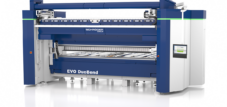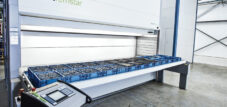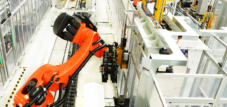The hardening press is the heart of mechanical engineering - hardening presses with standardized automation solutions from Wickert
Language selection 📢
Published on: December 8, 2023 / update from: December 8, 2023 - Author: Konrad Wolfenstein
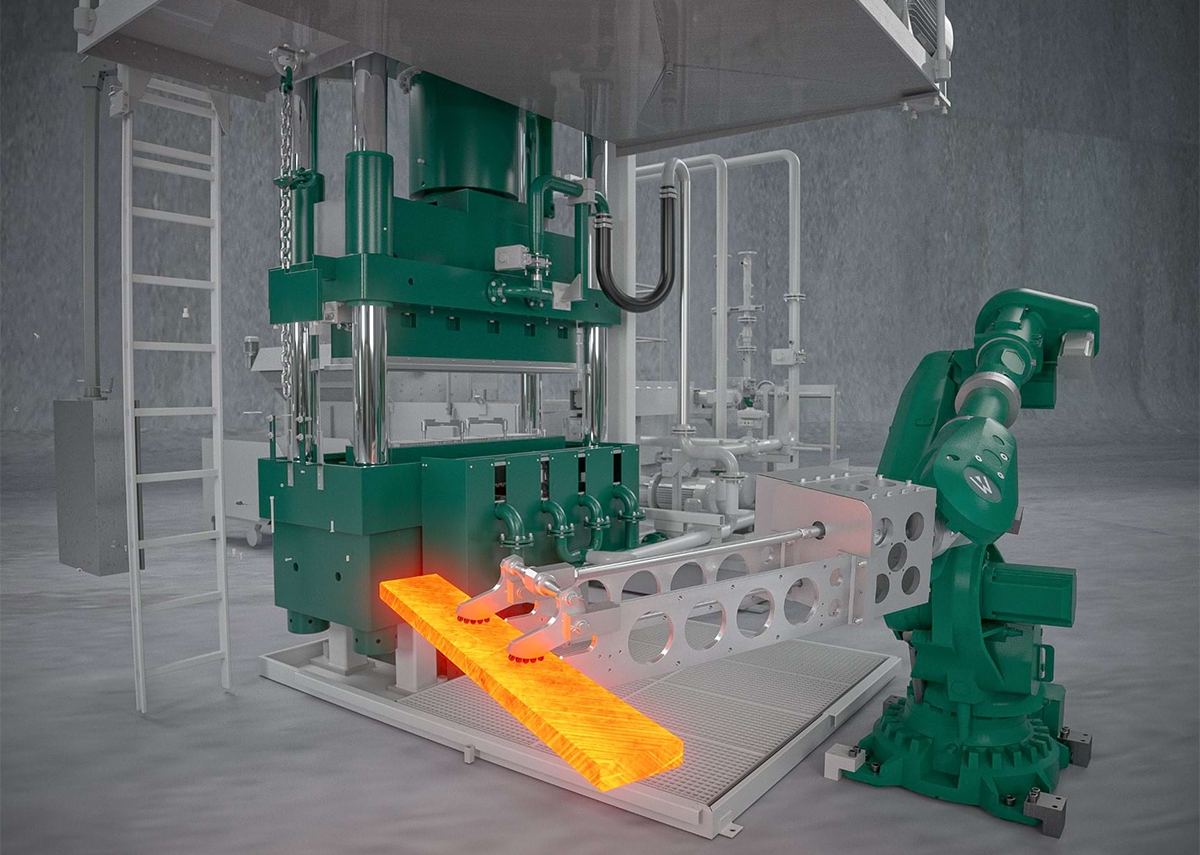
Hardening presses with standardized automation solutions from Wickert – Image: WICKERT Maschinenbau GmbH
🔧 Hardening presses are the heart of mechanical engineering
Hardening presses are an important element in mechanical engineering and the metalworking industry. They are used to increase the hardness of metal parts, which improves the strength and longevity of these parts. Hardening presses can be used in various applications, from making tools and machine parts to producing auto parts and much more. They play a crucial role in producing high-quality metal components, making them an important component in mechanical engineering.
Hardening presses are a crucial component in mechanical engineering that is often overlooked, but play an immense role in the production of high quality components.
🛠️ The basics of hardening presses
Hardening presses, also known as hardening machines, are specialized machine tools used to increase the hardness of materials. This is done by applying pressure and heat to the material. The main goal is to improve the mechanical properties of the material, such as its strength, hardness and wear resistance.
🔄 How hardening presses work
The way a hardening press works is fascinating and technically demanding. Essentially, a hardening press consists of a press chamber in which the material to be hardened is placed. Pressure is then applied to the material while simultaneously generating heat. This combination of pressure and heat changes the structure of the material on a microscopic level, resulting in increased hardness.
There are different types of hardening presses including hydraulic, mechanical and electrical presses. Hydraulic presses use hydraulic fluid to create pressure, while mechanical presses use mechanical levers and forces. Electric presses, on the other hand, use electrical energy to generate the pressure.
🔩 Applications in mechanical engineering
Hardening presses are used in various areas of mechanical engineering and make a significant contribution to the production of high-quality components. Some of the most common uses are:
1. Tool making
Hardening presses are indispensable in tool production. The tools must be extremely durable to withstand the stresses of the manufacturing environment. Hardening the tool surfaces significantly extends their service life.
2. Automotive industry
In the automotive industry, hardening presses are used to increase the hardness of parts such as crankshafts, camshafts and transmission components. This improves the performance and reliability of the vehicles.
3. Aerospace
In the aerospace industry, hardening presses are used to produce components for aircraft and spacecraft. The high demands on safety and reliability require materials of the highest quality.
4. Mechanical engineering in general
In all mechanical engineering, hardening presses play a central role in the production of components such as bearings, gears and other components that are exposed to high loads.
🧩 The role of material selection
Choosing the right material is crucial to the success of the hardening process. Different materials respond differently to the curing process, and selecting the wrong material can lead to undesirable results. Materials such as steel, aluminum, titanium and stainless steel are common candidates for the hardening process.
🚀 The latest developments in the field of hardening presses
Technology in mechanical engineering is constantly evolving, and hardening presses are no exception. Here are some of the latest developments in this area:
1. Automation and robotics
The integration of automation and robotics into hardening presses has significantly improved the efficiency and precision of the hardening process. Robots can accurately position materials and monitor the curing process, resulting in more consistent results.
2. Computer-based control systems
Modern hardening presses are equipped with advanced computer-based control systems. These systems allow precise control over pressure, temperature and process parameters, resulting in better reproducibility of results.
3. Improvements in materials science
Advances in materials science have led to a better understanding of material reactions during the hardening process. This helped to optimize the selection of the right materials and process parameters.
🌱 Challenges and future prospects
Although hardening presses are indispensable in mechanical engineering, they also face some challenges. One of the main problems is the environmentally friendly disposal of hardening oils and liquids used in many hardening processes. However, the industry is working intensively on more environmentally friendly alternatives.
The future of hardening presses in mechanical engineering looks promising. With advances in technology and materials science, hardening presses are becoming even more precise and efficient. Integrating AI and machine learning into control systems could lead to further improvements.
⚙️ Crucial component in mechanical engineering
Hardening presses are an often overlooked but crucial component in mechanical engineering. They make a significant contribution to the production of high-quality components that are used in various industries. The latest developments in technology and materials science promise even better performance and efficiency in the future. It is important to continue researching and developing this technology to meet the needs of modern mechanical engineering.
📣 Similar topics
- 💡 Basics of hardening presses
- 🔧 How hardening presses work
- 🏭 Applications in mechanical engineering
- 🛠️ The role of material selection
- 🌟 Latest developments in hardening press technology
- 🌍 Environmentally friendly challenges in the hardening press industry
- 🚀 Future prospects for hardening presses in mechanical engineering
- 📈 Automation and robotics in hardening presses
- 🖥️ Computer-based control systems in hardening presses
- 🧪 Improvements in materials science for hardening processes
#️⃣ Hashtags: #mechanical engineering #hardening presses #technology #materials science #automation
🔥🏭 Wickert hardening presses: innovation and precision in metal processing
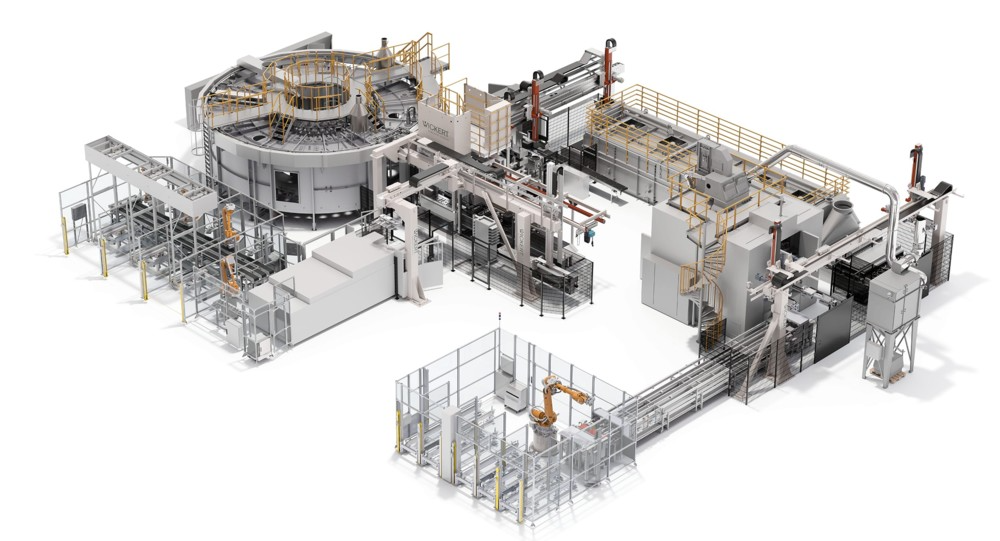
Fixture and press hardening system from Wickert (WFH-3-300 series) – Image: WICKERT Maschinenbau GmbH
🛠️ Wickert hardening presses represent the latest state of the art in the metal processing industry. They offer an innovative solution for forming and quenching workpieces in a fully enclosed mold, allowing precise and controlled flow of quenchant to component surfaces. This process ensures an even distribution of hardness across the entire workpiece, which is critical for applications where material consistency is critical.
🌀 A key aspect of Wickert Press technology is the use of in-line filtration. This innovative filtration technique ensures the quenching media remains free of contaminants, resulting in more reliable and consistent hardness. The filtration systems are designed to be serviceable with minimal disruption to production, maximizing uptime and reducing maintenance costs.
🤖 The flexible and standardized automation that Wickert offers is another milestone in hot parts handling. These automation systems are adaptable not only to the specific component geometry, but also to the respective heating process, allowing them to cover a wide range of applications. The modular design of the automation solutions enables rapid adaptation to new production requirements, which is particularly advantageous in today's fast-moving manufacturing world.
🌱 In the modern manufacturing industry, sustainability is not a luxury, but a necessity. Wickert's hardening presses are designed to be leaders in this area. The simultaneous forming and quenching technology not only reduces investment costs by minimizing the number of machines required, but also optimizes energy consumption. By reducing energy requirements and shortening production cycles, these machines significantly contribute to reducing the ecological footprint and offer companies the opportunity to achieve their sustainability goals.
🔧 Wickert's intelligent tool changing systems represent a paradigm shift in the adaptability of hardening systems. These systems allow users to machine a variety of component shapes without requiring a separate set of tools for each shape. Through specially tailored tool changing and clamping systems, setup times can be drastically shortened and the availability and flexibility of the systems increased. The result is significantly increased production capacity and smoother operations.
📣 Similar topics
- 🔧 The future of metal processing: Wickert hardening presses in focus
- 💡 Innovation in the metal industry: Wickert hardening presses at a glance
- 🔄 Efficient production with Wickert hardening presses
- 🌱 Sustainable metal processing with Wickert hardening presses
- 🤖 Automation in the metal industry: Wickert sets standards
- ⚙️ Precision and flexibility: Wickert hardening presses in detail
- 🌐 International excellence: Wickert hardening presses are in demand worldwide
- 💪 High-performance technology: Wickert hardening presses in use
- 🌟 Wickert hardening presses – quality and efficiency combined
- 🔍 Hardening presses through the ages: Wickert remains ahead
#️⃣ Hashtags: #Metalworking #Innovation #Sustainability #Automation #Precision
🎯🎯🎯 Benefit from Xpert.Digital's extensive, fivefold expertise in a comprehensive service package | R&D, XR, PR & SEM

AI & XR 3D Rendering Machine: Fivefold expertise from Xpert.Digital in a comprehensive service package, R&D XR, PR & SEM - Image: Xpert.Digital
Xpert.Digital has in-depth knowledge of various industries. This allows us to develop tailor-made strategies that are tailored precisely to the requirements and challenges of your specific market segment. By continually analyzing market trends and following industry developments, we can act with foresight and offer innovative solutions. Through the combination of experience and knowledge, we generate added value and give our customers a decisive competitive advantage.
More about it here:
🔩🔨🛠️ Hardening presses: applications, advantages and the future in mechanical engineering
Hardening presses are a crucial component in various industries, especially mechanical engineering. These machines play an important role in processing materials and ensure that components have the required hardness and strength. In this article, we'll take a closer look at hardening presses, examine their applications, explain the benefits they offer, and take a look at the future of mechanical engineering.
🛠️ The applications of hardening presses
Hardening presses are widely used in a variety of industries and meet a wide range of applications. Here are some of the main areas where hardening presses are used:
1. Metal processing
In metal processing, hardening presses are essential for producing metal parts such as screws, bolts, gears and other components. The right hardness ensures the longevity and performance of these parts.
2. Automotive industry
In the automotive industry, hardening presses are used to produce components such as crankshafts, camshafts, piston rings and transmission components. These parts must withstand extreme stress, which is why precise control of hardness is crucial.
3. Aerospace
In the aerospace industry, hardening presses are used to produce aircraft components such as landing gear, turbine blades and structural parts. These components must be light, but still extremely resilient.
4. Machine tool construction
Hardening presses are also indispensable in the production of machine tools. Here they are used to make parts such as drills, milling cutters and cutting tools that need to be precise and sharp.
5. Energy production
In power generation, hardening presses are important for the production of turbine blades, generator disks and other power plant components. The efficiency and reliability of these parts depends on their hardness.
💪 The advantages of hardening presses
The use of hardening presses brings a variety of benefits that directly impact the quality and performance of products in various industries. Here are some of the key benefits:
1. Improved durability
By precisely controlling hardness, components can have a longer lifespan and greater resistance to wear and fatigue.
2. Better performance
Components with the right hardness offer better performance and efficiency in various applications, be it engines, transmissions or other machines.
3. Quality control
Hardening presses allow for precise quality control to ensure that all parts produced meet the required standards.
4. Cost effectiveness
By improving the durability and performance of components, companies can save money in the long term by reducing breakdowns and repairs.
5. Versatility
Hardening presses can be used on a variety of materials including metals, plastics and ceramics, highlighting their versatility in various industries.
6. Environmental friendliness
The use of hardening presses helps reduce waste and rejects by optimizing the quality of the parts produced.
🔮 The future in mechanical engineering with hardening presses
The future of mechanical engineering promises exciting developments and innovations in the field of hardening presses. Here are some trends and perspectives for the coming years:
1. Automation and digitalization
The integration of hardening presses into automated manufacturing processes will continue to increase in the future. Digitalization enables more precise control and monitoring of hardness parameters, resulting in even higher quality and efficiency.
2. Material innovation
As new materials are developed, including lightweight composites and advanced alloys, hardening presses will be able to machine these materials and produce components with exceptional properties.
3. Precision and miniaturization
The need for precise, small components will grow in various industries, particularly in electronics and medical technology. Hardening presses are adapted accordingly to meet these requirements.
4. Sustainability
Sustainability will be a central factor in the mechanical engineering industry. There will be increased demand for hardening presses that are more energy efficient and environmentally friendly.
5. Artificial intelligence and machine learning
Integrating AI and machine learning into hardening presses will help further optimize processes and detect anomalies early to ensure product quality.
6. Global Market
Demand for hardening presses will increase not only in established markets but also in emerging economies as the industry expands worldwide.
🌟🌐 Automation, material innovations and sustainability
Hardening presses are essential tools in mechanical engineering that offer a variety of applications and benefits. They help improve the durability, performance and quality of components, which is crucial in various industries. The future of mechanical engineering promises exciting developments, including automation, material innovations and sustainability, which will further strengthen the role of hardening presses. It remains to be seen how these developments will shape the industry in the coming years, but one thing is certain: hardening presses will play a central role in this development.
📣 Similar topics
- 💡 The versatility of hardening presses
- 🔧 Hardening presses in metal processing
- 🚗 Hardening presses in the automotive industry
- 🚀 Hardening presses in aerospace
- 🛠️ Hardening presses in machine tool construction
- 💰 The cost effectiveness of hardening presses
- 🌱 Environmentally friendly hardening presses
- 🔮 The future of mechanical engineering with hardening presses
- 🤖 Automation and digitalization of hardening presses
- ♻️ Sustainable hardening presses
#️⃣ Hashtags: #hardening presses #metal processing #automotive industry #aerospace #machine tool construction

Plan your solar system for the most common applications conveniently online with our solar system planner!
With our user-friendly solar system planner you can plan your individual solar system online. Whether you need a solar system for your home, your business or for agricultural purposes, our planner offers you the opportunity to take your specific requirements into account and develop a tailor-made solution.
The planning process is simple and intuitive. You simply enter relevant information. Our planner takes this information into account and creates a tailor-made solar system that meets your needs. You can try out different options and configurations to find the optimal solar system for your application.
Additionally, you can save your plan to review later or share with others. Our customer service team is also available to answer your questions and provide support to ensure your solar system is optimally planned.
Use our solar system planner to plan your individual solar system for the most common applications and advance the transition to clean energy. Start now and take an important step towards sustainability and energy independence!

The solar system planner for the most common applications: Plan the solar system online here - Image: Xpert.Digital
More about it here:
We are there for you - advice - planning - implementation - project management
☑️ Smart City & Factory: Industry expert for energetic 5G buildings and halls as well as advice and installation of solar systems
☑️ Xpert.Plus - logistics consulting and logistics optimization
☑️ Industry expert, here with his own Xpert.Digital Industry Hub with over 1,500 specialist articles
I would be happy to serve as your personal advisor.
You can contact me by filling out the contact form below or simply call me on +49 89 89 674 804 (Munich) .
I'm looking forward to our joint project.
Xpert.Digital - Konrad Wolfenstein
Xpert.Digital is a hub for industry with a focus on digitalization, mechanical engineering, logistics/intralogistics and photovoltaics.
With our 360° business development solution, we support well-known companies from new business to after sales.
Market intelligence, smarketing, marketing automation, content development, PR, mail campaigns, personalized social media and lead nurturing are part of our digital tools.
You can find out more at: www.xpert.digital - www.xpert.solar - www.xpert.plus






